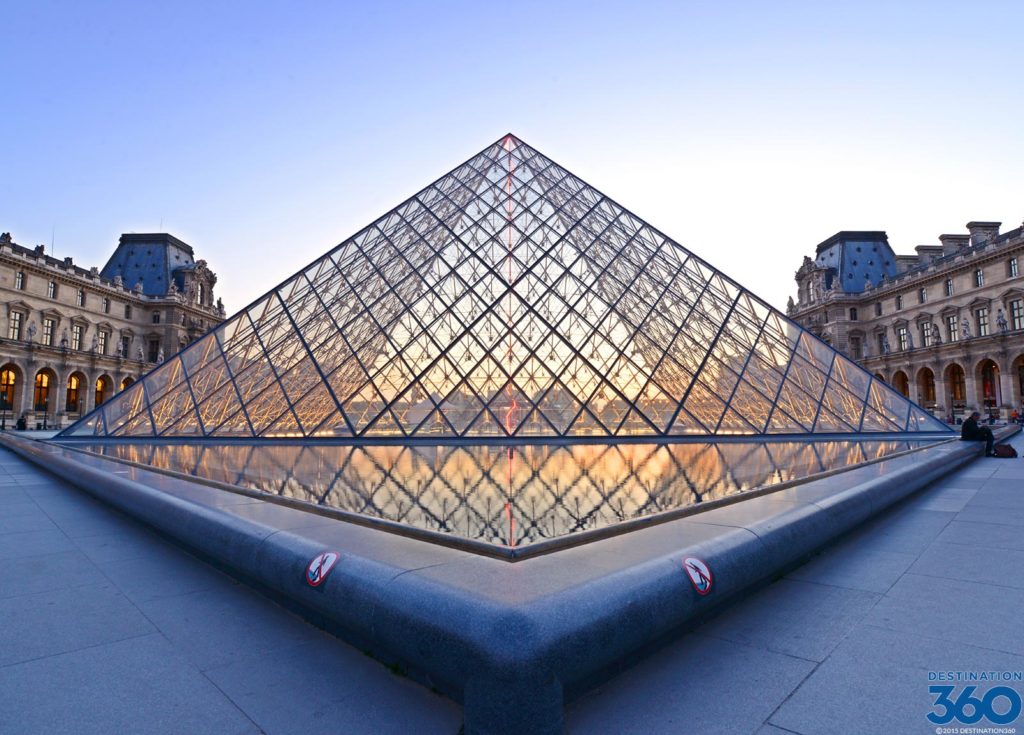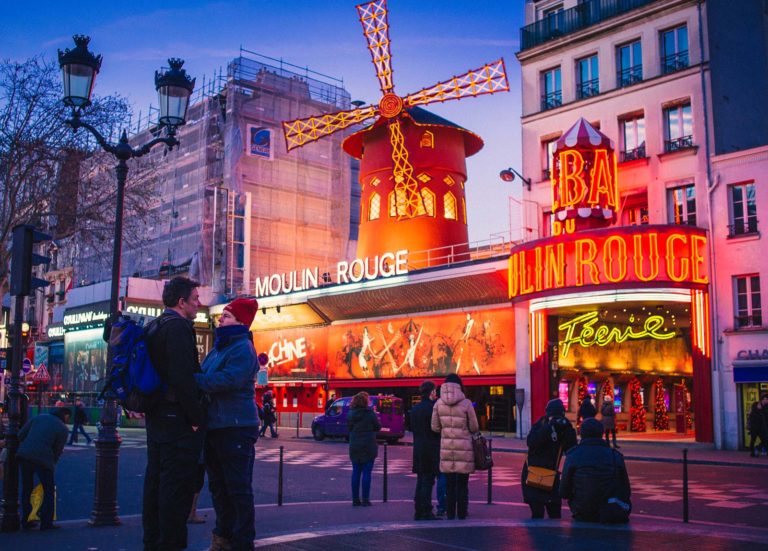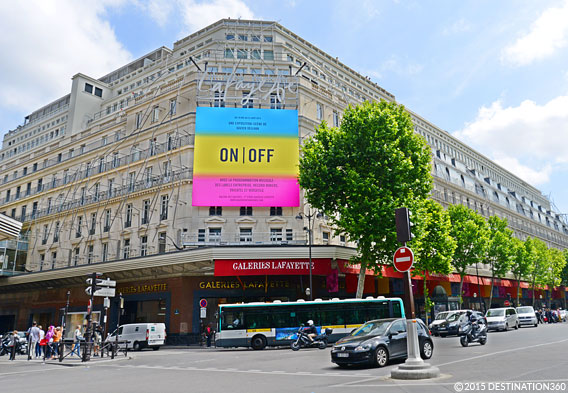Louvre Pyramid

The Louvre Pyramid is one of the most distinctive features of the Parisian landscape. Serving as the grand entrance of one of the world’s finest museums, the pyramid was designed by famed architect I.M. Pei. Opened in 1989 at the bicentennial of the French Revolution, the Pyramid at the Louvre has become been a symbol of the museum and of modern Paris.
The scale of the Louvre Pyramid is quite impressive. At the base, the pyramid of glass and steel is nearly 100 feet wide; the massive sculpture soars 72 feet, towering above the visitor promenade. Nearly 800 diamonds— or triangle—shaped panes of glass were specially designed to let in the perfect amount of the light to the visitor center below.
The Pyramid at the Louvre can be seen from the outside plaza and from below. The spacious lobby beneath is properly called the Hall Napoléon, serving as an visitor center and an entry point into the massive museum home to Leonardo da Vinci masterpieces and so much more. Escalators lead to public galleries and a spiral staircase descends from the Cour Napoléon, the central courtyard.
Leaving behind the Louvre Pyramid and heading into the museum, you’ll find some of the world’s greatest collections of art and cultural landmarks. The largest French national museum, which has been open since the 1790s, welcomes millions of visitors every year. So when you’re standing in front of the Winged Victory statue, admiring the scope of the Islamic art collection, or embarking on a thematic tour, you’ll find something to set your heart soaring. Heading back outside, you’ll have the chance to wander through lovely gardens and an open-air statue gallery, just a short stroll from the Louvre Pyramid.
The history of the Louvre Pyramid begins in the early 1980s when French President François Mitterrand commissioned the new addition to the historic museum. From the beginning, the plans stirred up controversy; many were concerned about a modern structure added to a building begun in the twelfth century. Even with this chapter in the history of the Louvre Pyramid, it’s become one of the most visited landmarks in the entire world—along with other treasures such as the Mona Lisa, Venus de Milo, Egyptian antiquities, and decorative objects once owned by French royalty.
La Pyramide Inversée, a counterpart to the Pyramid at the Louvre, opened in 1993. The inverted skylight towers over the Carrousel du Louvre, an underground shopping mall next to the Hall Napoléon. Below the glass pyramid, you’ll find dozens of shops, cafes, and open spaces. It’s a fine place to enjoy the views and the special displays. Every November, the exhibit space serves as one of the galleries for Paris Photo exhibition.
When The Da Vinci Code, Dan Brown’s popular novel, was published, the history of the Louvre Pyramid took a new turn. Both the pyramid and its inverted counterpart became the stuff of legend, figuring prominently in to the plot of the book and its movie adaptation. Many tour companies offer Da Vinci Code tours that include stops at these Louvre landmarks. Decide for yourself what you think about this tale, but you can’t deny that the Louvre Pyramid is an amazing sight to behold.



